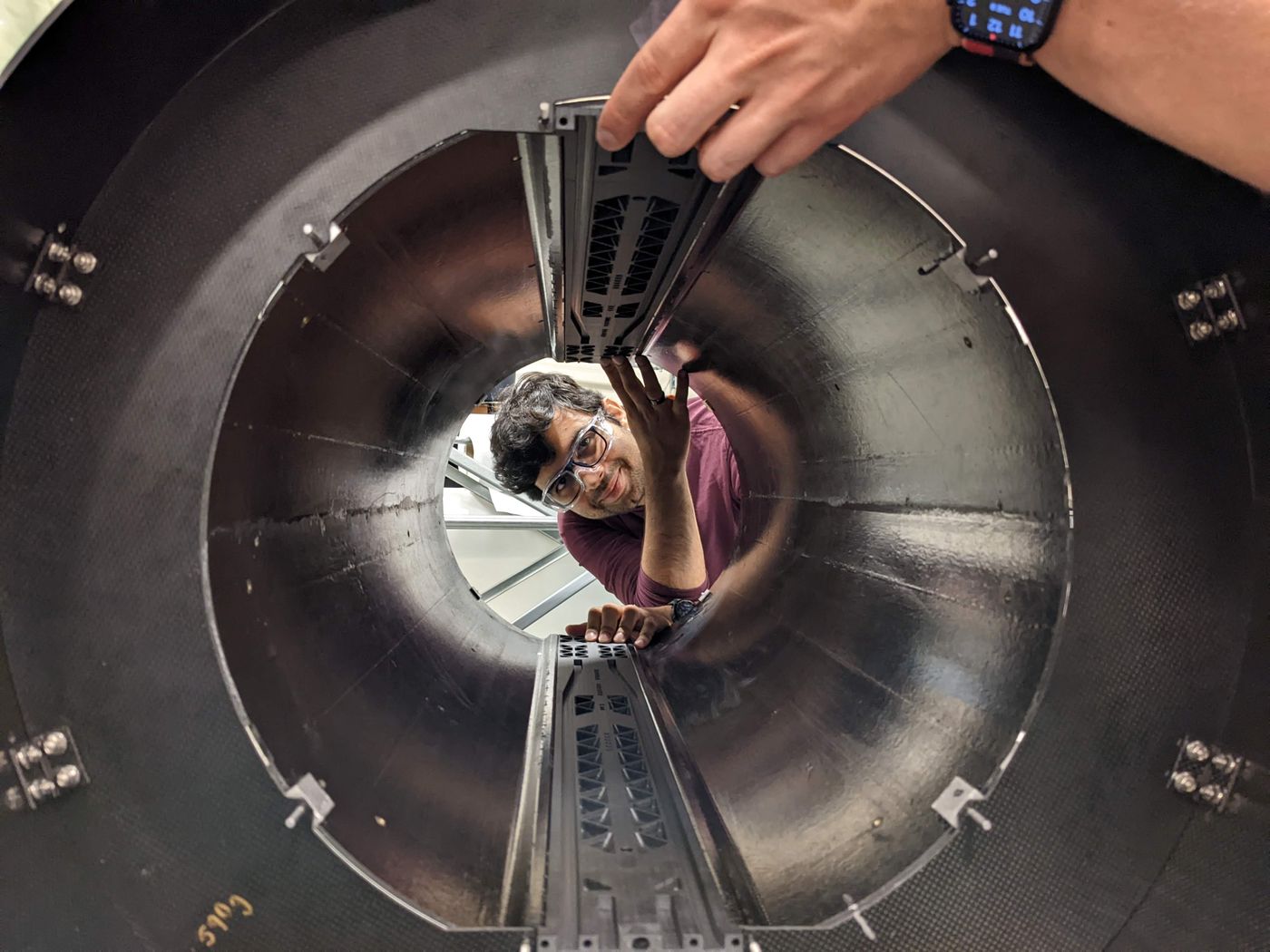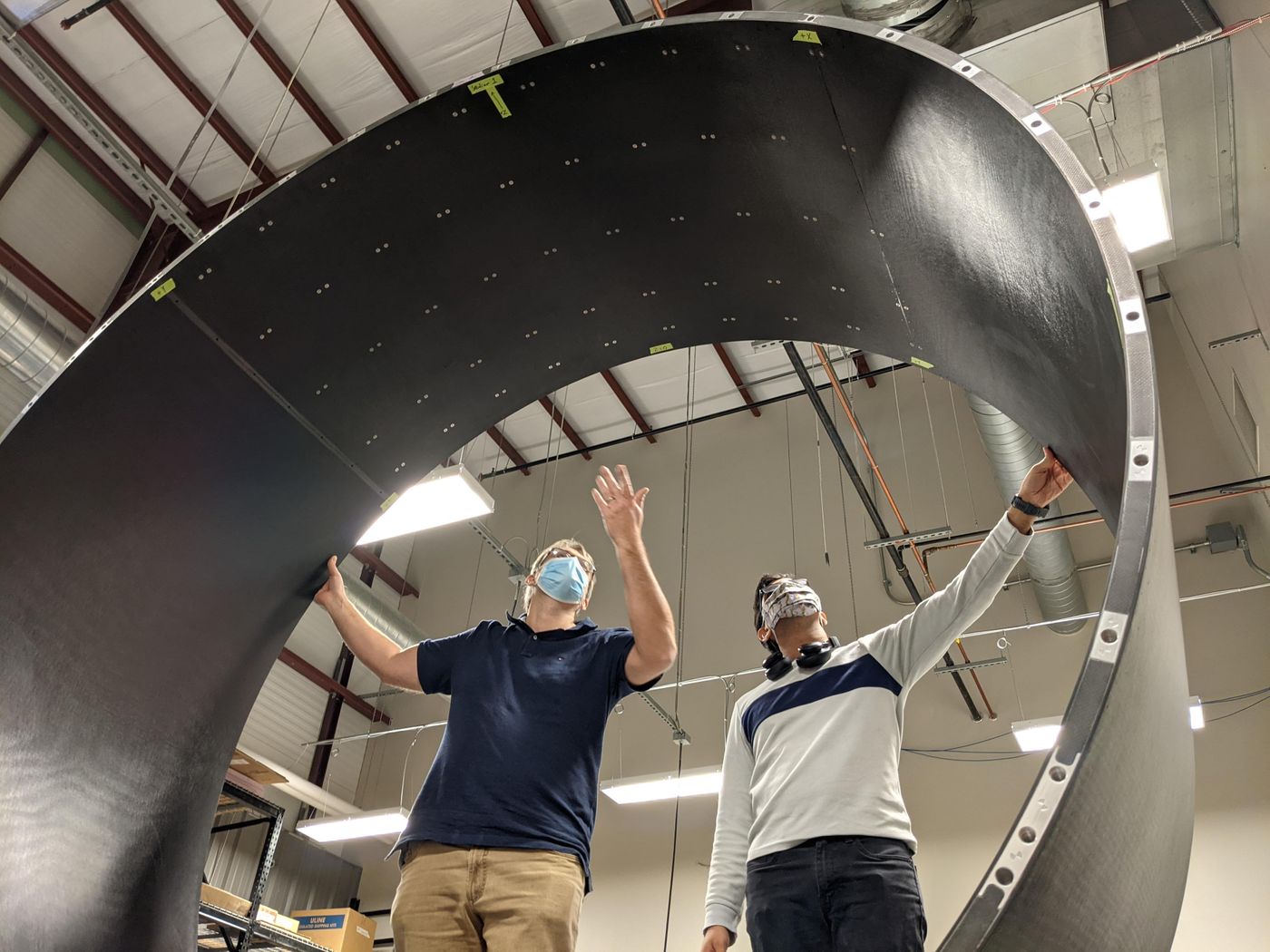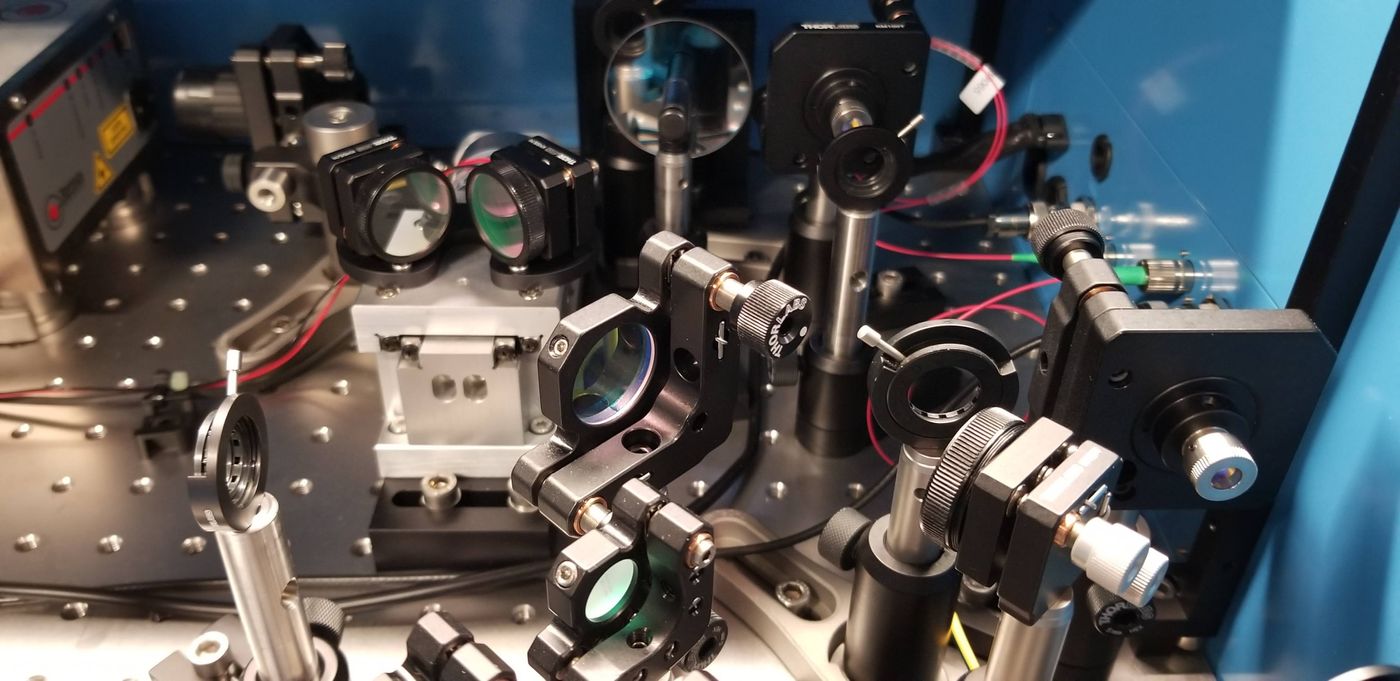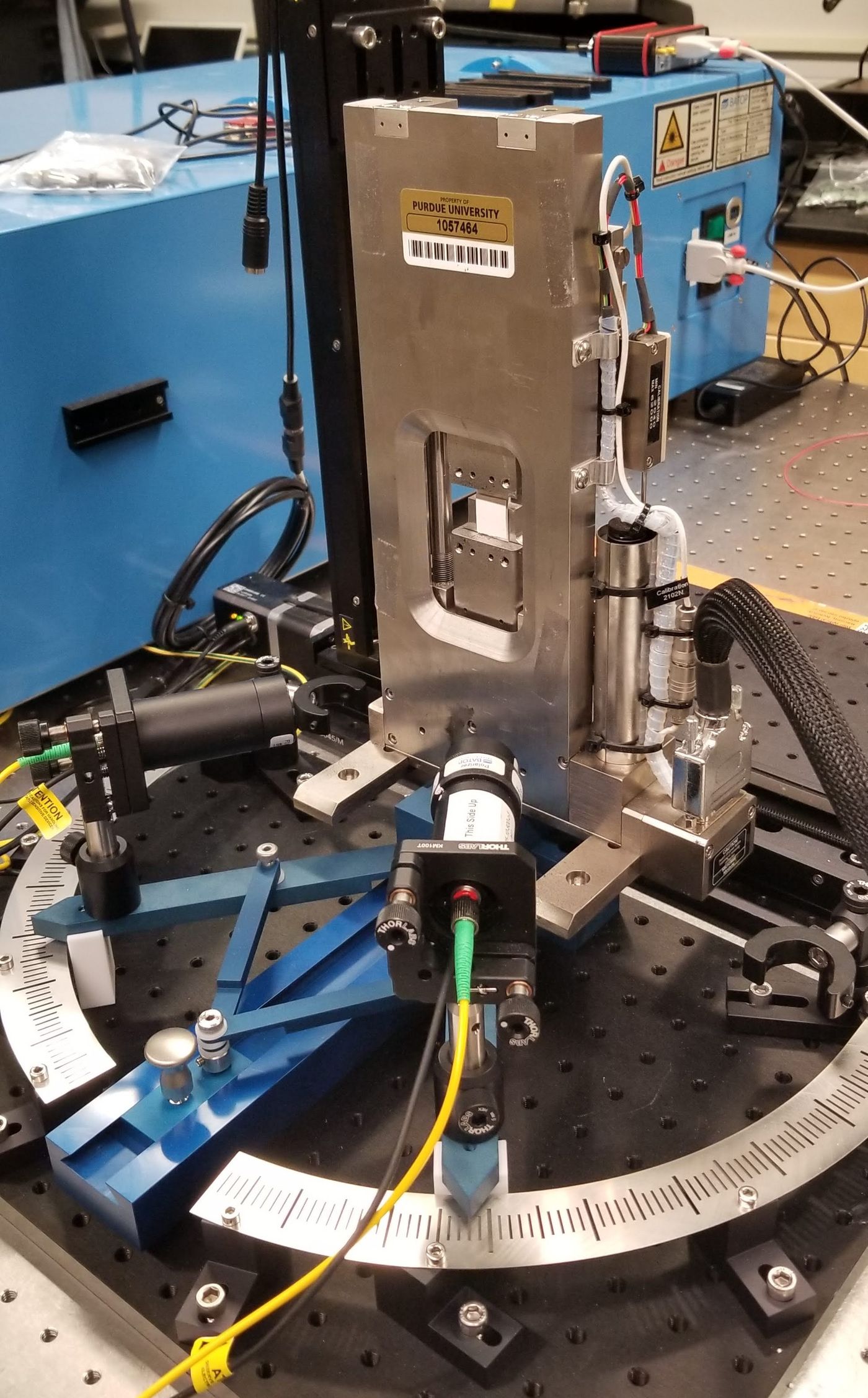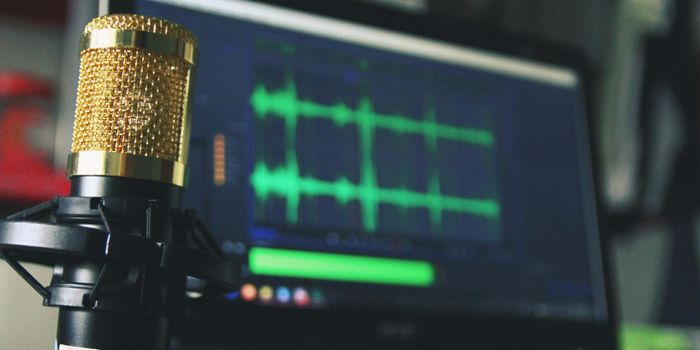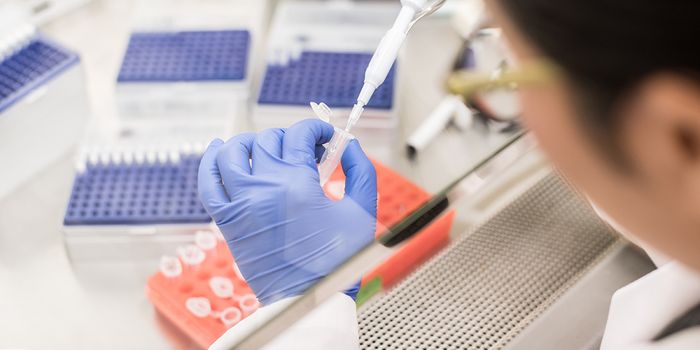Terahertz Time Domain Spectroscopy and Stress Mapping | Sushrut Karmarkar, PhD Candidate at Purdue University | Grad Student Highlights
Sushrut Karmarkar is a 5th-year PhD Candidate in the School of Aeronautics and Astronautics at Purdue University whose research focuses on structures and materials. Sushrut is originally from Aurangabad, Maharashtra, India, and completed his Bachelor’s Degree in Mechanical Engineering from the Dr. Babasaheb Ambedkar Marathwada University in Aurangabad in 2016 followed by a Master’s Degree in Aerospace, Aeronautical, and Astronautical Engineering (AAE) from Purdue University in 2018.
Inner Tracker Support Tube - Carbon Composite structure for the CMS-HL Upgrade for CERN. (Credit: Sushrut Karmarkar)
Sushrut currently conducts research in two labs, the Interfacial Multiphysics Lab at Purdue where he studies the development of terahertz time domain spectroscopy for interface strain-stress mapping within composite materials and coatings, and the High-Luminosity Upgrade project for the CMS Collaboration with CERN where he’s a composite engineer working to design, manufacture, validate, and install carbon fiber composite structures for the Phase-II Tracker Detector.
“As a kid growing up in a small city in India, I remember visiting science centers and labs and always being awed with people in white lab coats!” Sushrut tells Labroots. “I had the opportunity to visit on multiple occasions the research center my mom used to work in and also ‘play’ in the HVAC manufacturing plant, courtesy of my dad. I also remember that Sundays were spent watching a show on DD India (a TV channel) called ‘Turning Point’ which predominantly talked about space exploration and technological advancements.”
Boundary Timing Layer Support Tube - Sushrut with advisor Dr. Jung - This is a prototype of the largest structure being built at Purdue University for the CMS High-Luminosity (HL) Upgrade (Link) (Credit: Sushrut Karmarkar)
Being a part of the Indian space program was something Sushrut aspired to do as he grew up during a decade when it was picking up steam, ultimately finding his motivation to study science-related topics in school after being fascinated by the engineering of cars and airplanes. Sushrut credits his father for getting him interested in mechanical engineering, saying his dad hopes Sushrut can come work for his company and replace him in HVAC design and manufacturing, but Sushrut tells Labroots he “keeps disappointing him in this regard!”
Sushrut credits his undergraduate advisor, Dr. Abhay Kulkarni, for being his “largest chunk of inspiration” for pursuing his field, noting that Dr. Kulkarni instilled the meaning of discipline and hard work into Sushrut and his fellow classmates, and is grateful for Dr. Kulkarni for being responsible for allowing Sushrut to meet Dr. APJ Abdul Kalam, who served as the 11th President of India and an early pioneer of the Indian space program, and Sushrut says meeting Dr. Kalam was the final piece of motivation to pursue graduate studies in aerospace engineering.
Sushrut at the P5 CMS assembly area at CERN, France. (Credit: Sushrut Karmarkar)
“Grad school is a place where you learn what research is about in a setting where it is okay to fail and where you have real responsibilities, but you also have an advisor who helps you achieve them,” Sushrut tells Labroots.
Sushrut offers nothing but praise for both the labs he works in and his advisors, Dr. Vikas Tomar and Dr. Andreas Jung, who he says let him explore a great deal in the field of composite design and remote sensing.
“The best part still about my program here is that I get to go to CERN and work in one of the largest technical collaborations in the world,” Sushrut tells Labroots. “As a part of my research, I am developing terahertz time domain spectroscopy techniques to evaluate the degradation and cracking in the interface materials between silicon detector modules and base composite support structures for the Tracker Forward Pixel Detector for CMS collaboration. We are also designing and building large composite structures for sustaining the high radiation environment of the particle collider.”
Internal laser optic set-up for generation of terahertz (THz) probe and pump beams for material characterization. (Credit: Sushrut Karmarkar)
Bi-material interface strain measurement setup using THz-TDS. (Credit: Sushrut Karmarkar)
Sushrut tells Labroots one of the main challenges for him and his classmates in grad school is finances, especially with rising costs and inflation, which he says makes it difficult to save in grad school and barely getting by every month with the stipend they receive.
“The other big challenge to grad students in AAE is that the field is changing at a rapid pace and to keep up in this race we definitely need to spend a lot of time understanding the work of others,” Sushrut tells Labroots. “The quality of research papers and data is degrading quite a bit. When compared to papers from 10 years ago and today, there are certainly more papers that have been published where the claims made/experiments shown are almost impossible to replicate. Hence grad students, including me, need to be very, very critical of the work being cited and read as a part of the literature review that guides your contribution to the field.”
Various composite structure prototypes for the CMS - HL - Upgrade manufactured at Purdue University. (Credit: Sushrut Karmarkar)
As for his plans after getting his PhD, Sushrut aspires to remain as a research engineer on the CERN project in the years following graduation in hopes of finishing the project he’s currently working on, along with wanting to install the detector in the CERN tunnel, which is anticipated to happen in 2027.
In 5-10 years, Sushrut aspires to be a design engineering lead on particle accelerator projects like EPIC at Brookhaven National Labs and FCC at CERN. He was introduced to these projects at the Seattle Snowmass Summer Meeting 2022 and hopes to see how this research can be applied to outer space missions but is excited that his degree will allow him to work on structures 150 meters (~500 feet) underground.
You can connect with Sushrut Karmarkar on LinkedIn and read more about his research here.
